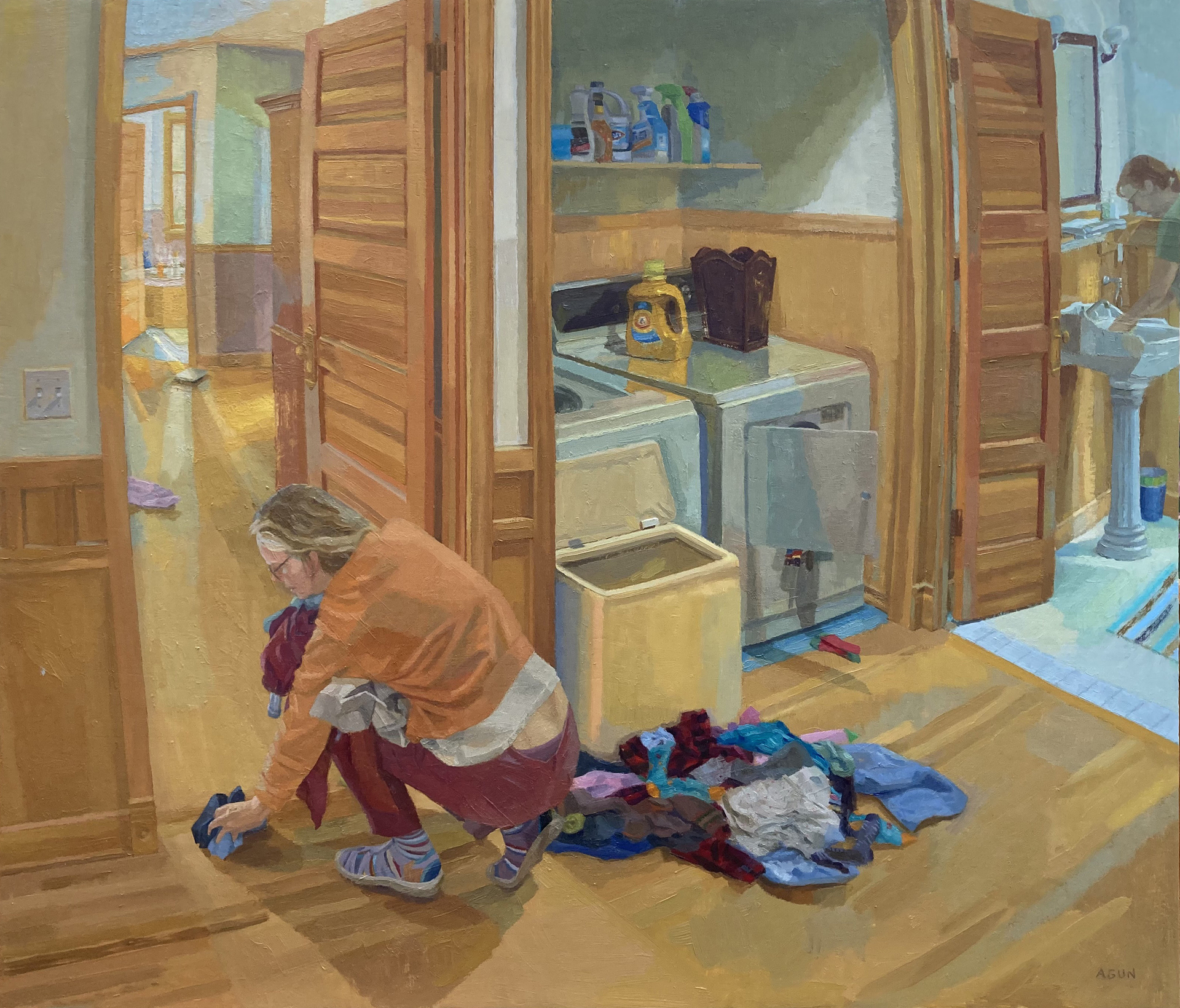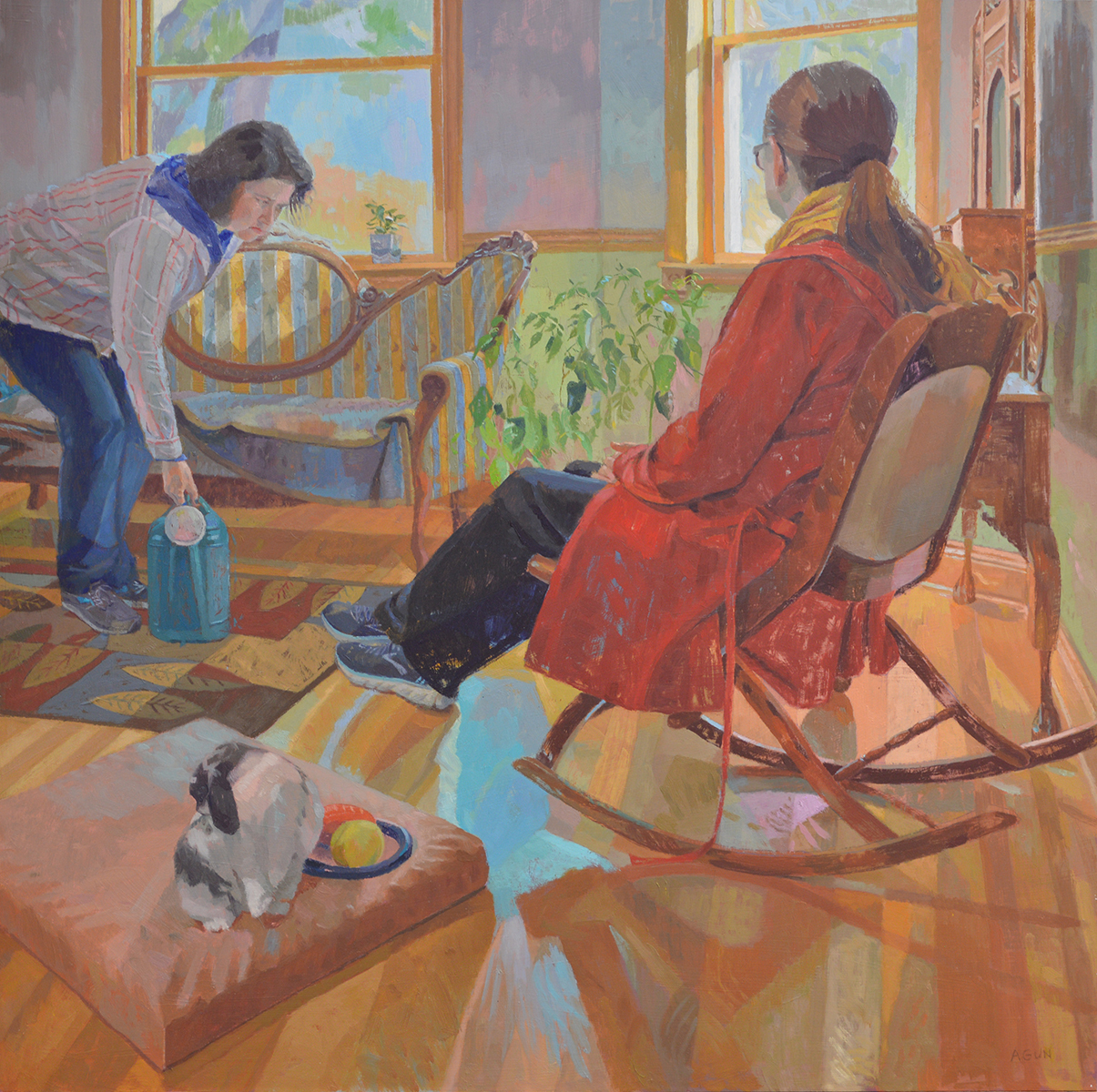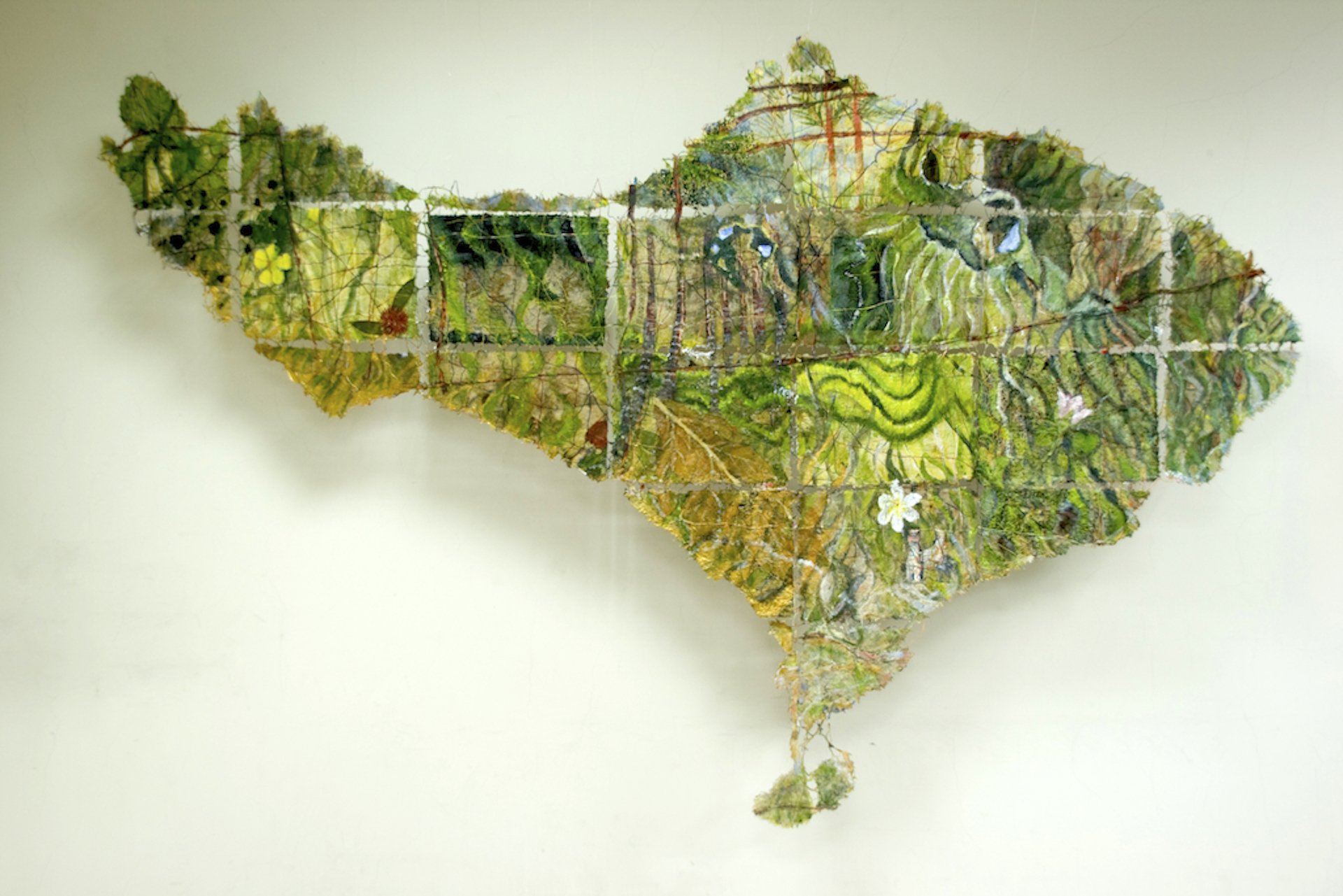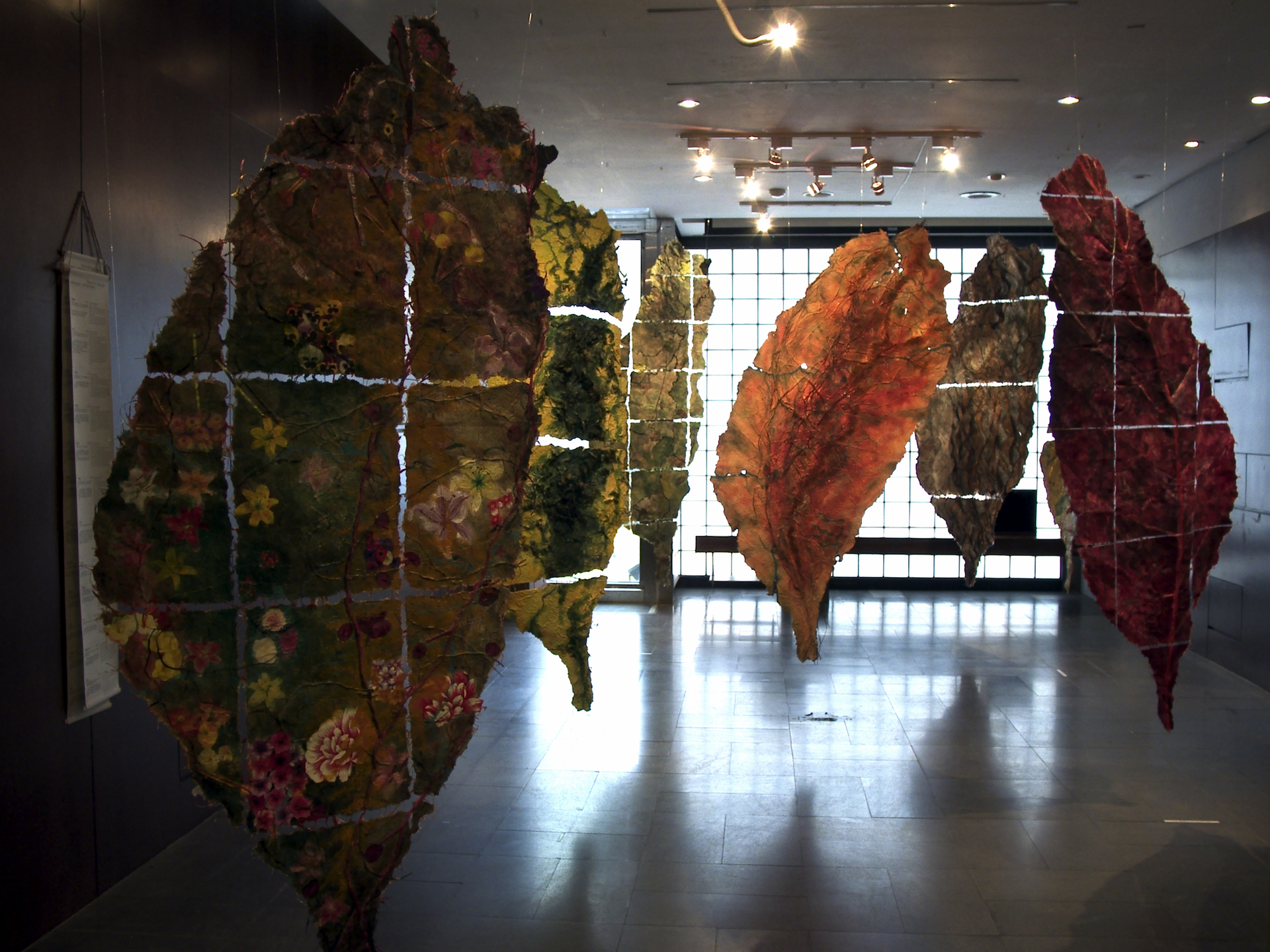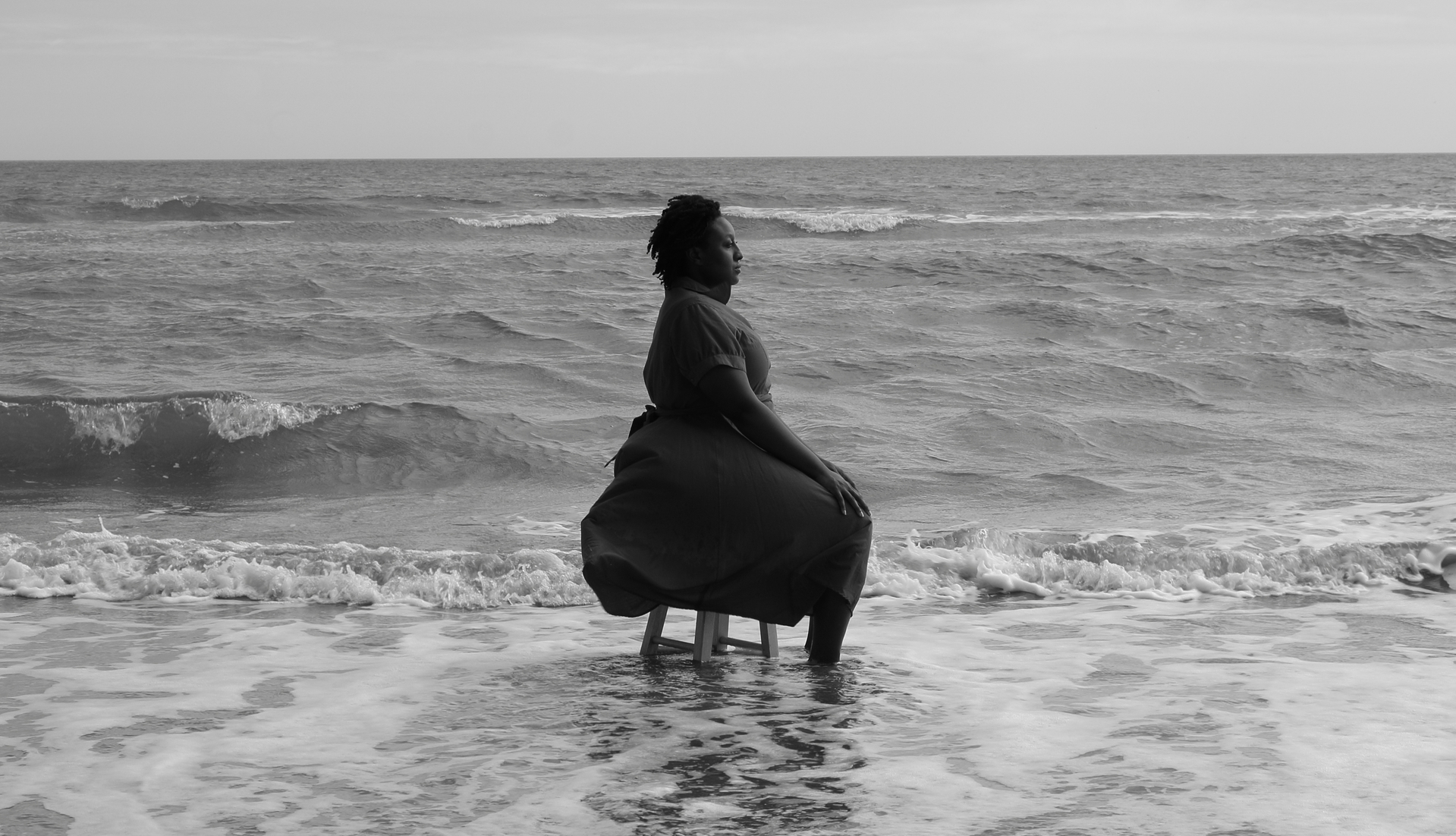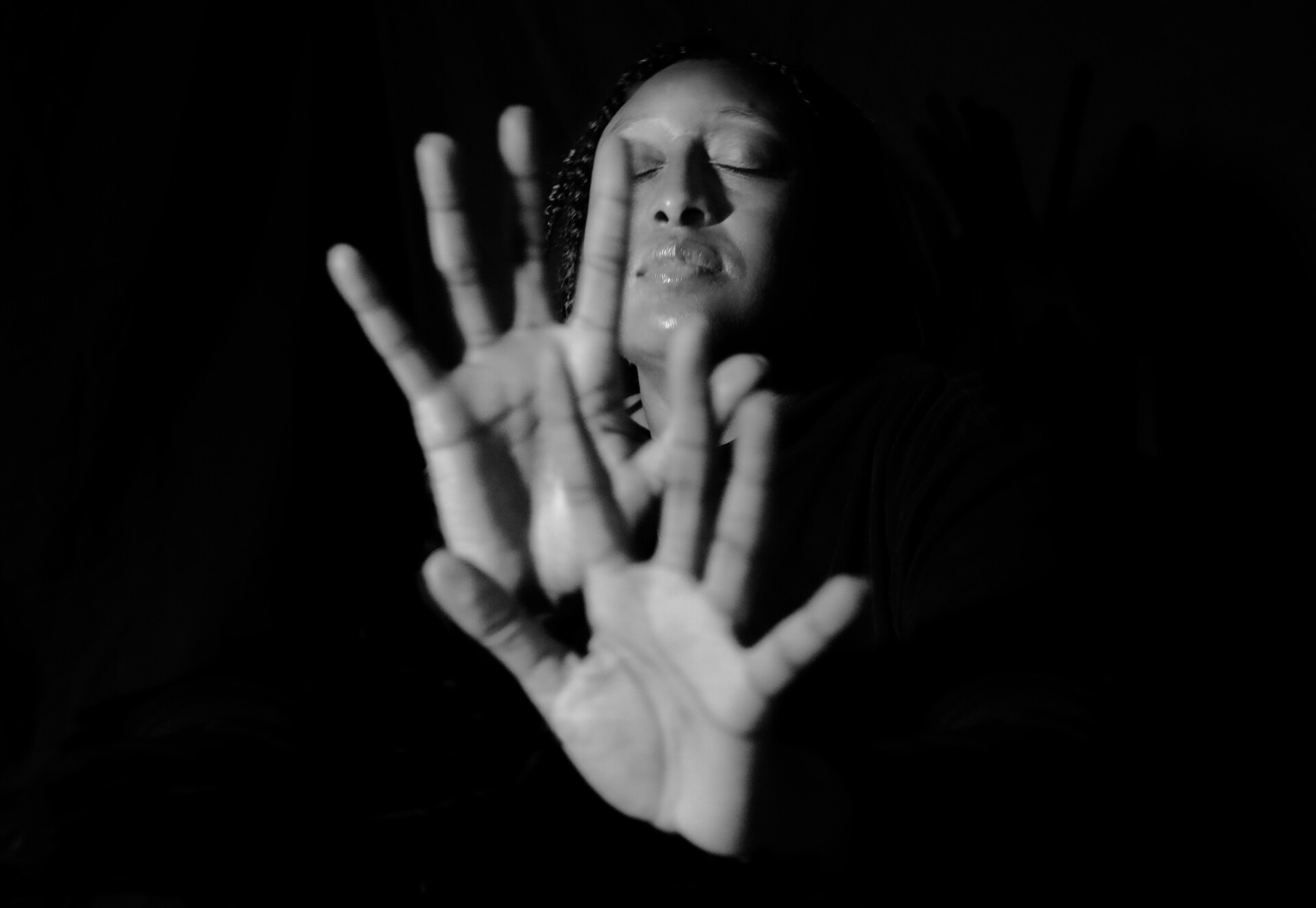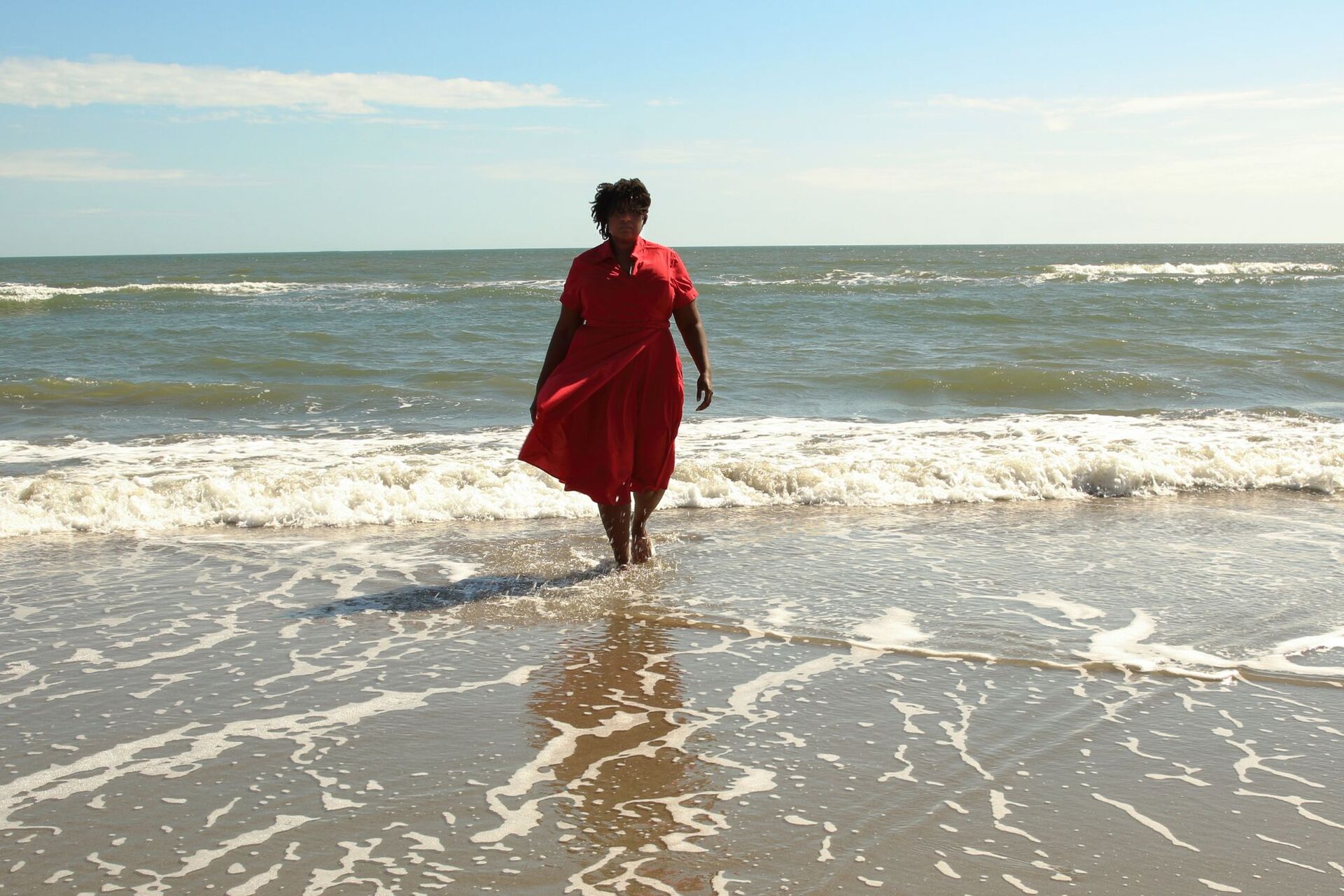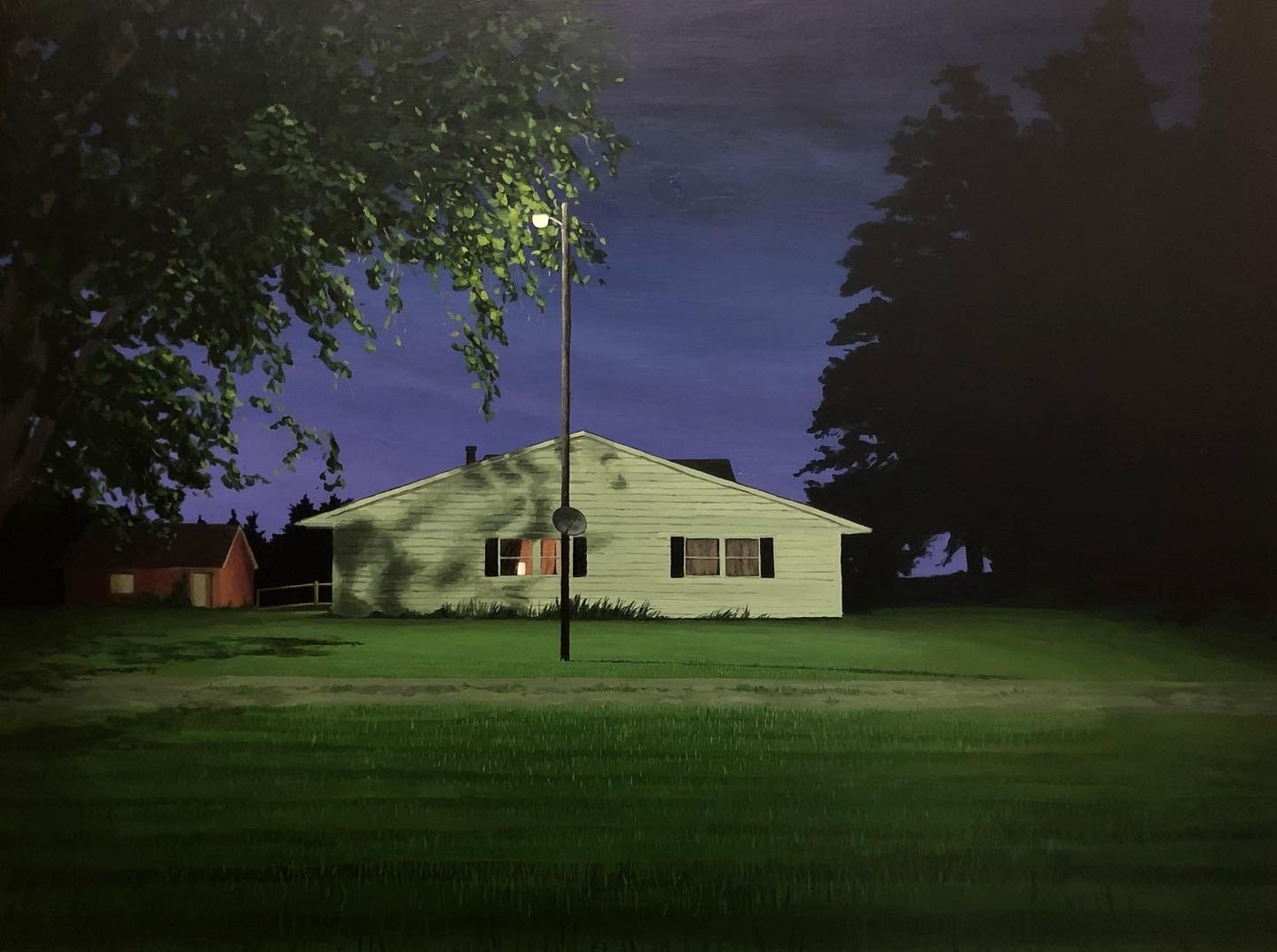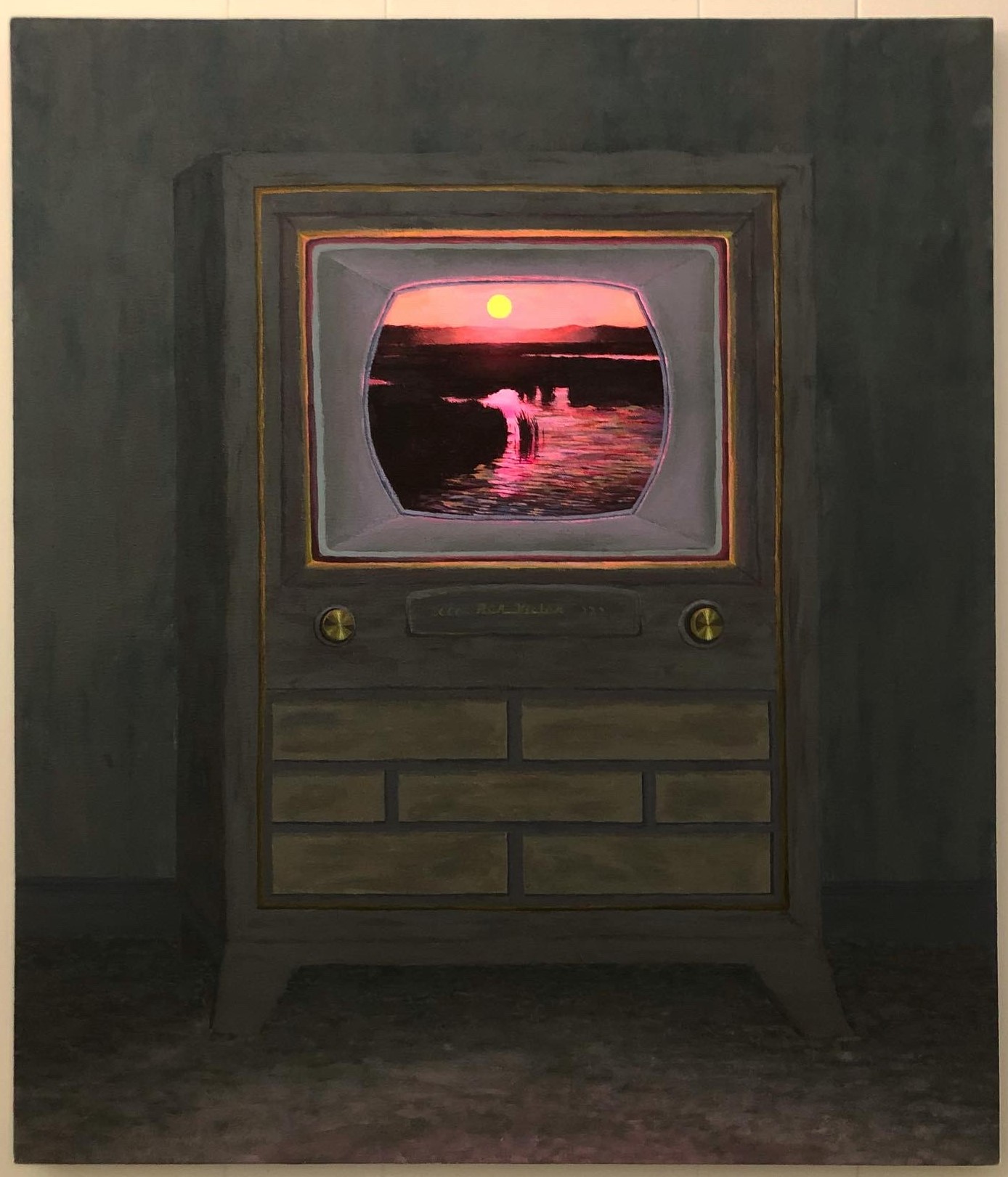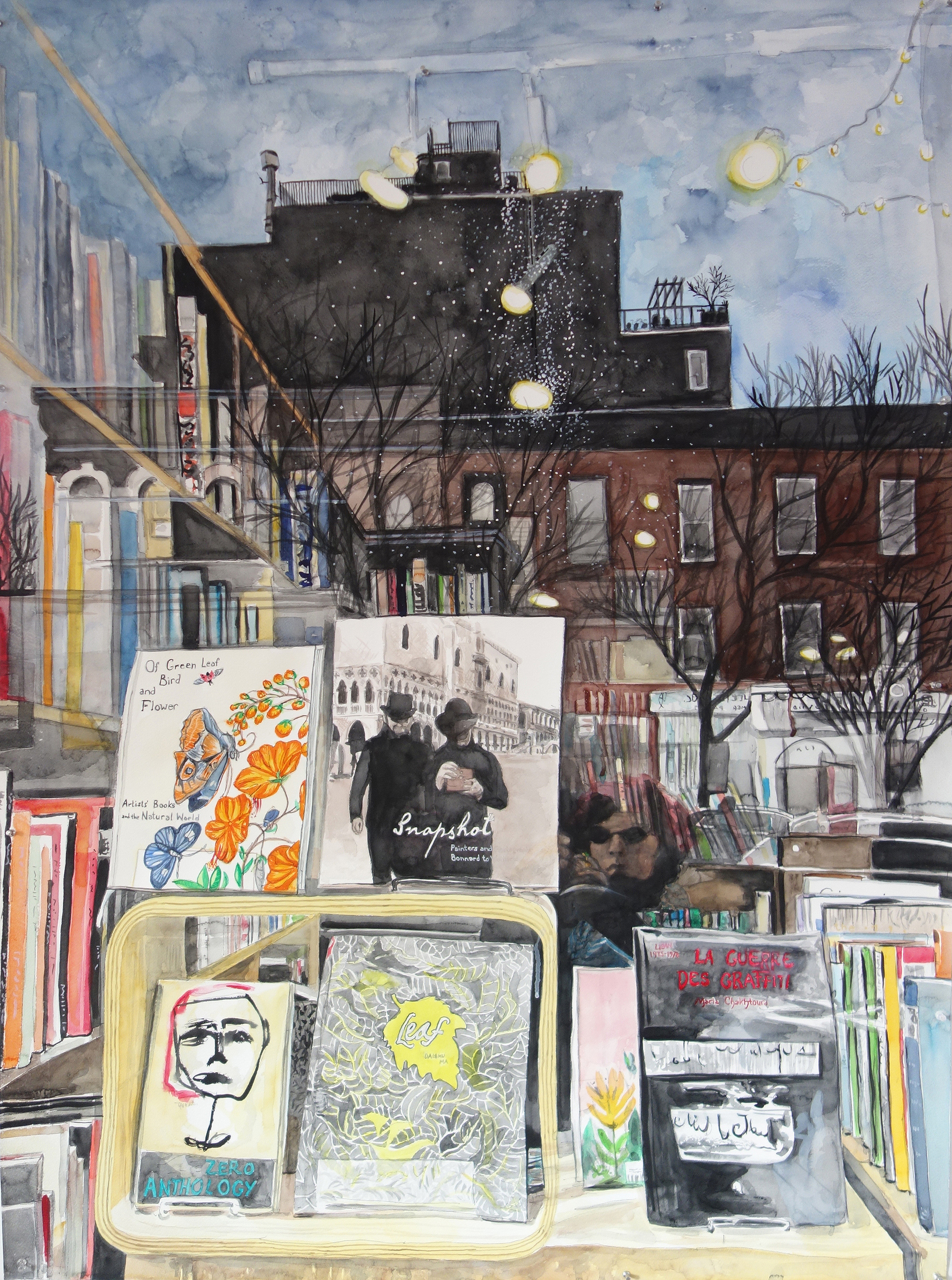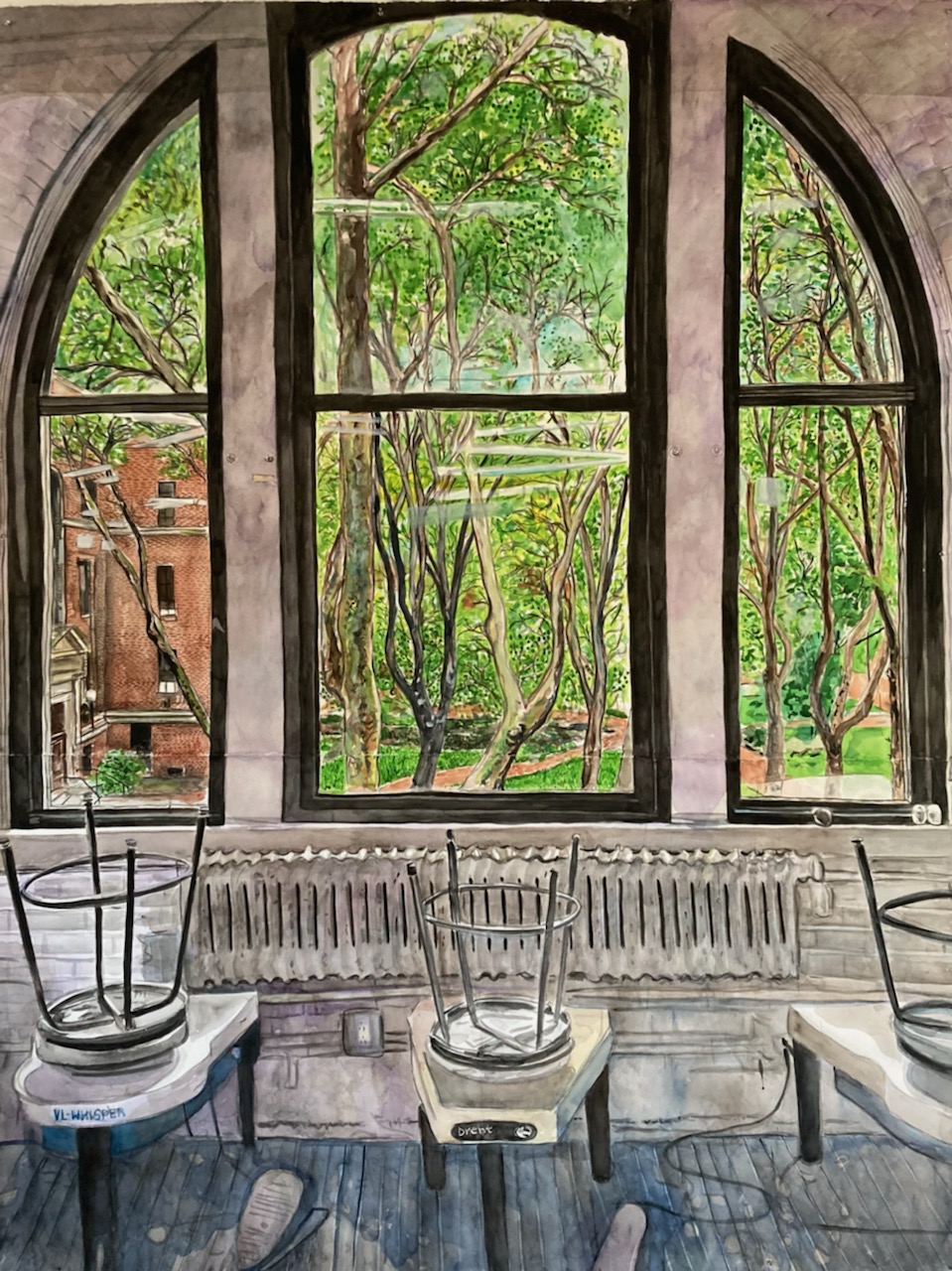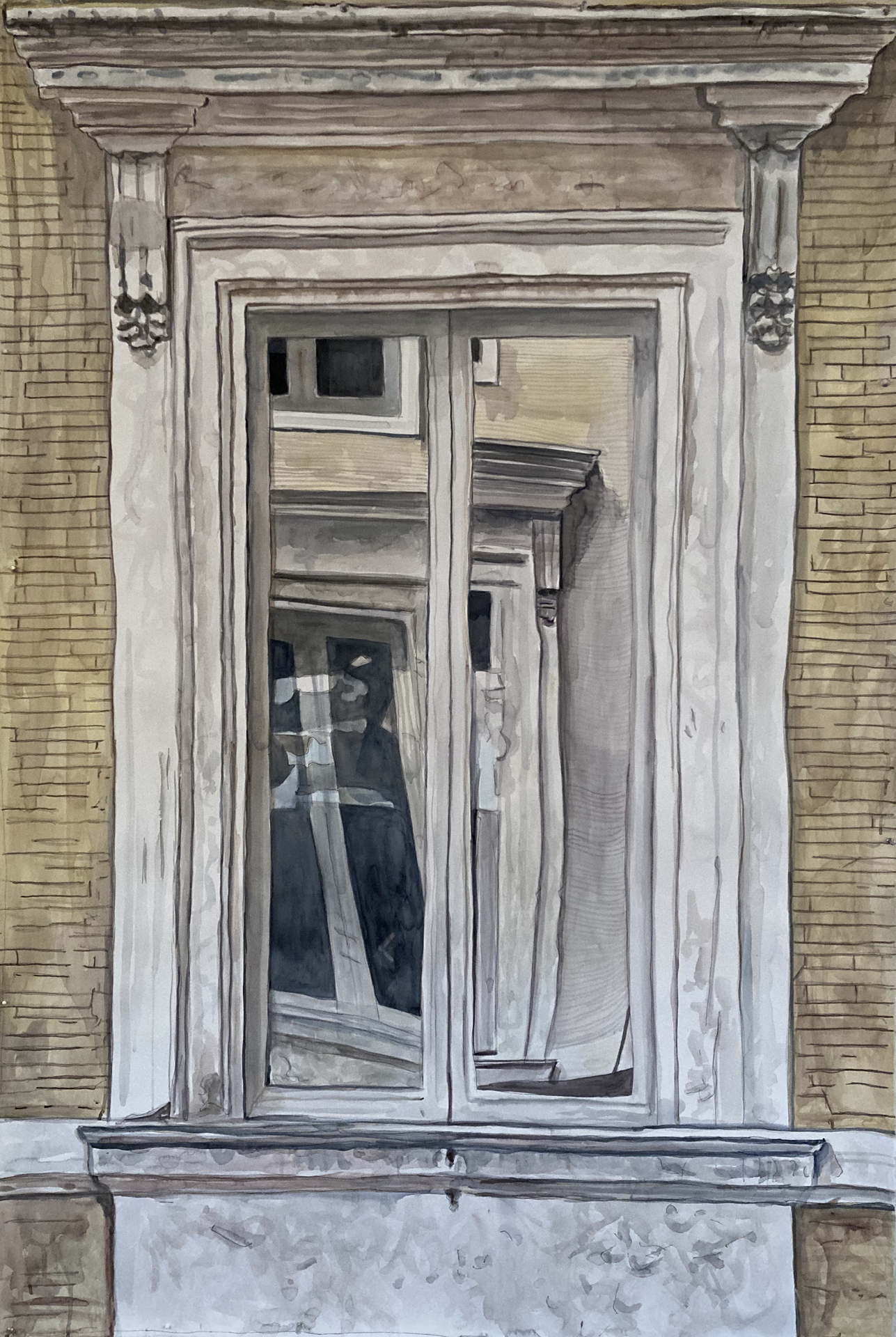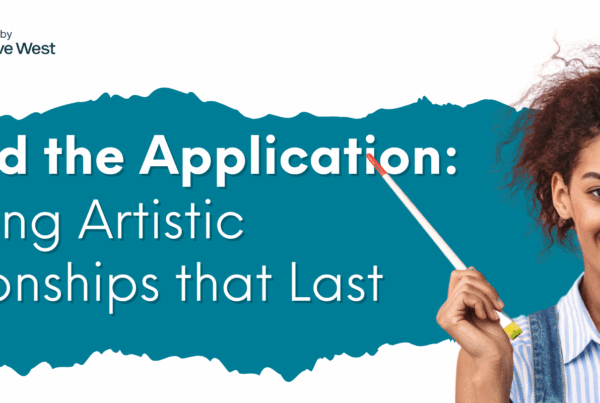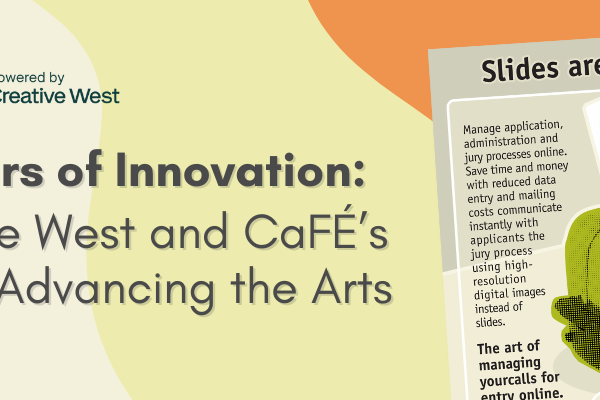
Our latest call for entry, CaFÉ All Over the Place, invited artists to submit artworks that explore the relationship to or the personal experiences of a particular place, community, or its impact on their identity. The goal of this open call was to showcase the talent of CaFÉ artists across a variety of mediums, locations, and identities. Artwork submitted to this call is being continuously shared on our Instagram page and is featured throughout our website.
In this blog post, we are highlighting five talented artists from different backgrounds, disciplines, and places. Get to know how each artist — Brandy Agun, Jane Ingram Allen, Brittany Alston, Cassandra Chalfant, and Meridith McNeal — and find out how they connect their work to a particular place or identity.
Brandy has studied art formally since graduating from college. Over this time, she spent 10 years at the Gage Academy of Art in Seattle, Washington focusing primarily on the figure, where she developed skills painting in pastel and drawing. To deepen her skills, Brandy studied classical drawing and oil painting for 3 years at Georgetown Atelier in Seattle, graduating in 2012. Since this time, she has painted steadily developing her unique view and has exhibited around the Pacific Northwest earning four first-place awards. Ever intrigued with figures, she depicts scenes expressing their relationship to an environment and lately often paints the environment by itself. Additionally, she enjoys still life, where objects become characters as though in a play. There is usually a touch of narrative in her work. Aside from painting and exhibiting, Brandy teaches at her home studio.
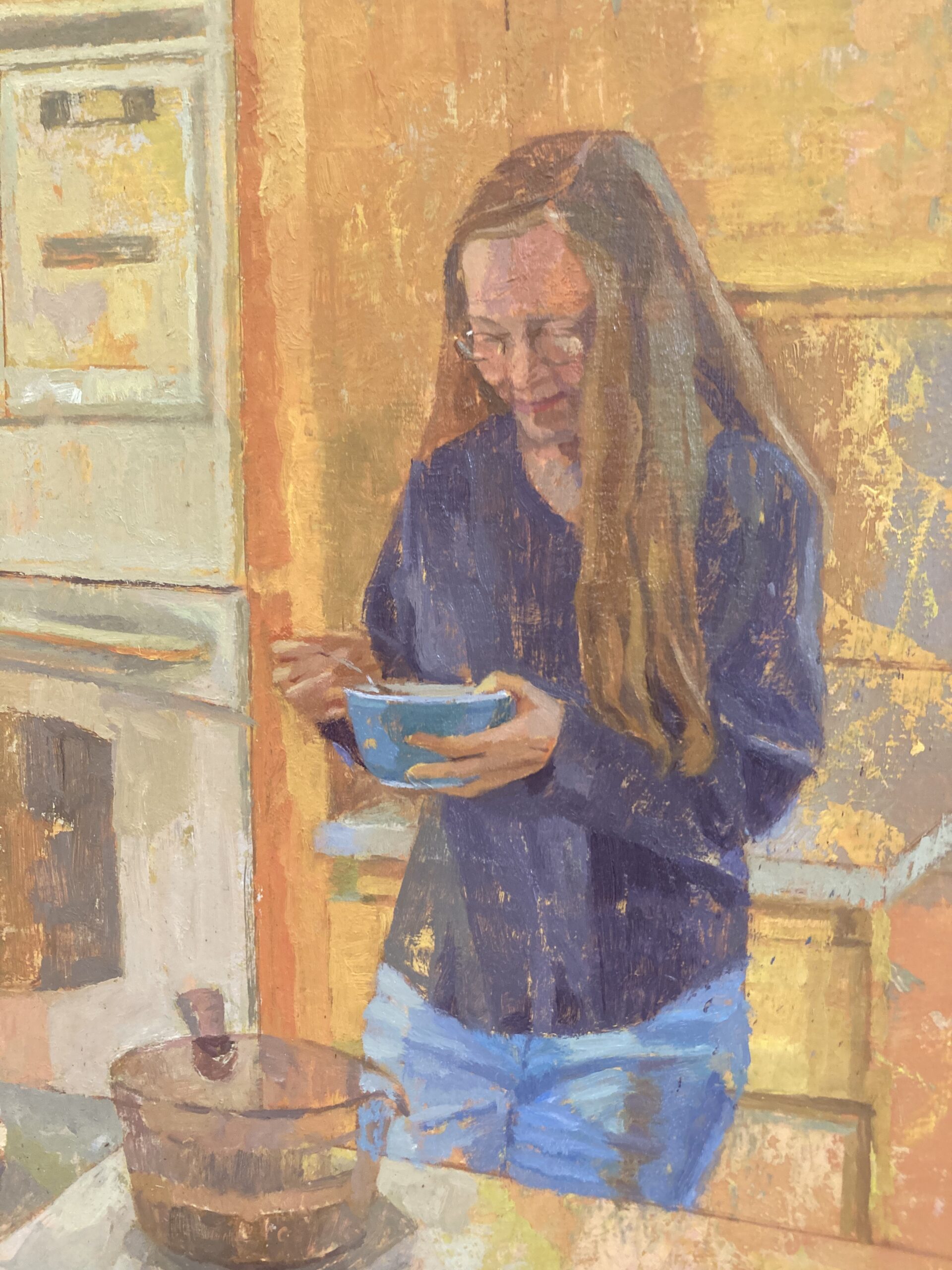
Artist Statement: My objective is to create emotional paintings, balancing the content with the design elements I find most pleasing to connect with the viewer and our common humanity. Painting, for me, is a conversation. I wish to speak my visual voice and hopefully, my work resonates with people. What excites me is what something looks like far more than what something actually is. I particularly enjoy painting interior and exterior spaces with or without figures. I respond to a sense of space whether it be a mundane corner in my house or the magic of the zoo. I like capturing our everyday experiences along with more special moments. And I enjoy both personal moments along with communal ones shared with strangers. The work I include I feel captures a bit of both.
View Q&A with Brandy Agun
Q: How do you believe your work resonates with this call’s theme of exploring a specific place, community, or its influence on your identity?
A: My work often depicts my home, which I gleefully populate with myself, my husband, pets, and my art students. I love painting people in interior and exterior places and my house is both specific, personal, and frankly very handy to paint. As I’m a full-time artist, I spend most of my time in my house, either in my studio or painting an interior from life. Painting interior scenes in my home lends itself to everyday life and things that I think people relate to. I’m finding my household items often lend themselves to wonderful shapes and most people have similar such items. It is really fun to turn something like the inside of a dishwasher or a laundry room into a painting. I do sometimes switch up the colors or exaggerate them to generate a more pleasing design.
Q: What are your hopes or goals for the future of your artistic endeavors?
A: I am classically trained and have a tendency to articulate things very precisely. I’m interested in abstraction more and wish to incorporate marks, shapes, and color purely as design elements. My work has been drifting in this direction and I wish to explore this more intensely. It really demands a lot of imagination and I am enjoying this exploration. I do image studies in Procreate on my iPad to quickly try things out. I find taking the ordinary and turning it into something more extraordinary very gratifying. I also love the early Renaissance artists such as Piero della Francesca and Giotto. I’m attracted to the flat, simple shapes and imaginary buildings and landscapes they put in their paintings. I’m going to explore the idea of flattening space more and perhaps play with imagined buildings in my backgrounds. I also enjoy pictures with a lot of people. They often simplified the palette to coordinate all the different shapes so things weren’t so overwhelming. I’m working on a piece right now of a petting zoo with a lot of people and animals with an eye toward these artists. It’s a lot to coordinate but I love the collage effect all the shapes provide. Going forward, I want to disguise people and objects more by blending them into the surrounding color shapes so it is less obvious they are there. I find this intriguing and it slows down the reading of the painting as the viewer hunts to find more of the surprises.
Jane Ingram Allen is an installation artist who does art projects around the world using hand papermaking with natural materials and collaborative processes to raise public awareness about environmental issues. Allen has received numerous awards for artist-in-residencies and community public art projects in the USA, the Philippines, Japan, Nepal, Brazil, China, Tanzania, Taiwan, Turkey, and Indonesia. She was a Fulbright Scholar artist-in-residence in Taiwan in 2004 and 2005 and a Fulbright Specialist in Turkey in 2015. She received Puffin Foundation Grants in 2003, 2007, and 2011 to support her art installations in New York and MA. For her artworks, Allen begins by making handmade paper from local plant waste and uses materials and techniques that contribute to sustainable living and improve the environment. Since 2012, she has been based in Santa Rosa, CA, and continues her work in the US and internationally.
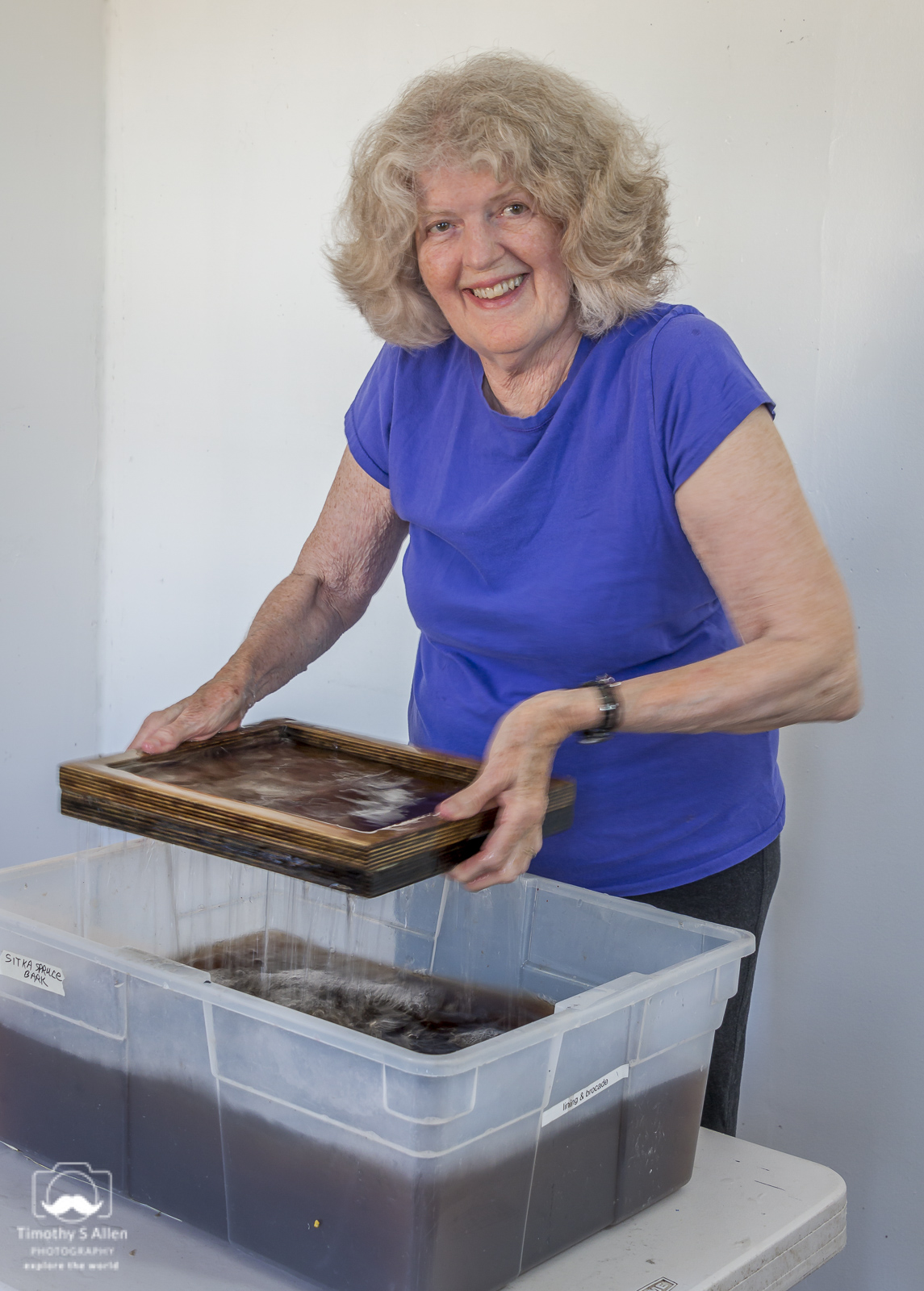
Artist Statement: My Site Maps are an ongoing series of map-based works that reflect my experience of a particular place and time. They are made on-site entirely from materials collected/harvested in that place. They show the particular characteristics of a place, as well as my personal experiences and contributions from local people. Maps are a way of seeing the landscape, and I like the contrast between the man-made boundaries of roads, highways, and political divisions and the natural boundaries of mountains, rivers, and oceans. Maps also reflect a culture and different ways of viewing the world. Each “site map” is made up of multiple sheets of natural plant fiber handmade paper created from plants collected in that place and joined with natural fiber threads so that the constructions fold up like maps. These mixed-media works use acrylic painting, drawing, collage, and other techniques on my handmade paper. They are two-sided and hang in space so that viewers can travel around and through them.
View Q&A with Jane Ingram Allen
Q: How do you believe your work resonates with this call’s theme of exploring a specific place, community, or its influence on your identity?
A: The “site maps” are about my experience of a particular place and time and are created all with materials collected from that place.
Q: What are your hopes or goals for the future of your artistic endeavors?
A: I want to continue going to new places for artist-in-residency experiences and be inspired by the geography, flora and fauna, and people and culture of each place as I create new artworks with handmade paper and mixed media techniques using the materials collected in each place.
Brittany is a self-taught photographer/visual artist. She is intrigued, whether it’s photography, cinema, exploring museums or art galleries, watching documentaries, sitting in the audience of shows such as theater, ballet, etc.! She cannot be defined into a box, and she is too expressive to have a limit placed upon her. She is determined to not only make “beautiful” artwork, but she also wants to make artwork that will connect with the viewer and hopefully awaken the unconscious mind to change the world for the better. The majority of her artworks are connected to the identity of who she is as a person. She is constantly inspired by her awareness of her emotions, current events, and her perception of the world around her. Brittany’s viewpoint of her artistry is constantly changing, and she tries to reflect that by using her camera as her main discipline of work. She hopes that her various forms of artistry will ultimately expand into this huge body of work that will stand the test of time like other renowned artists.
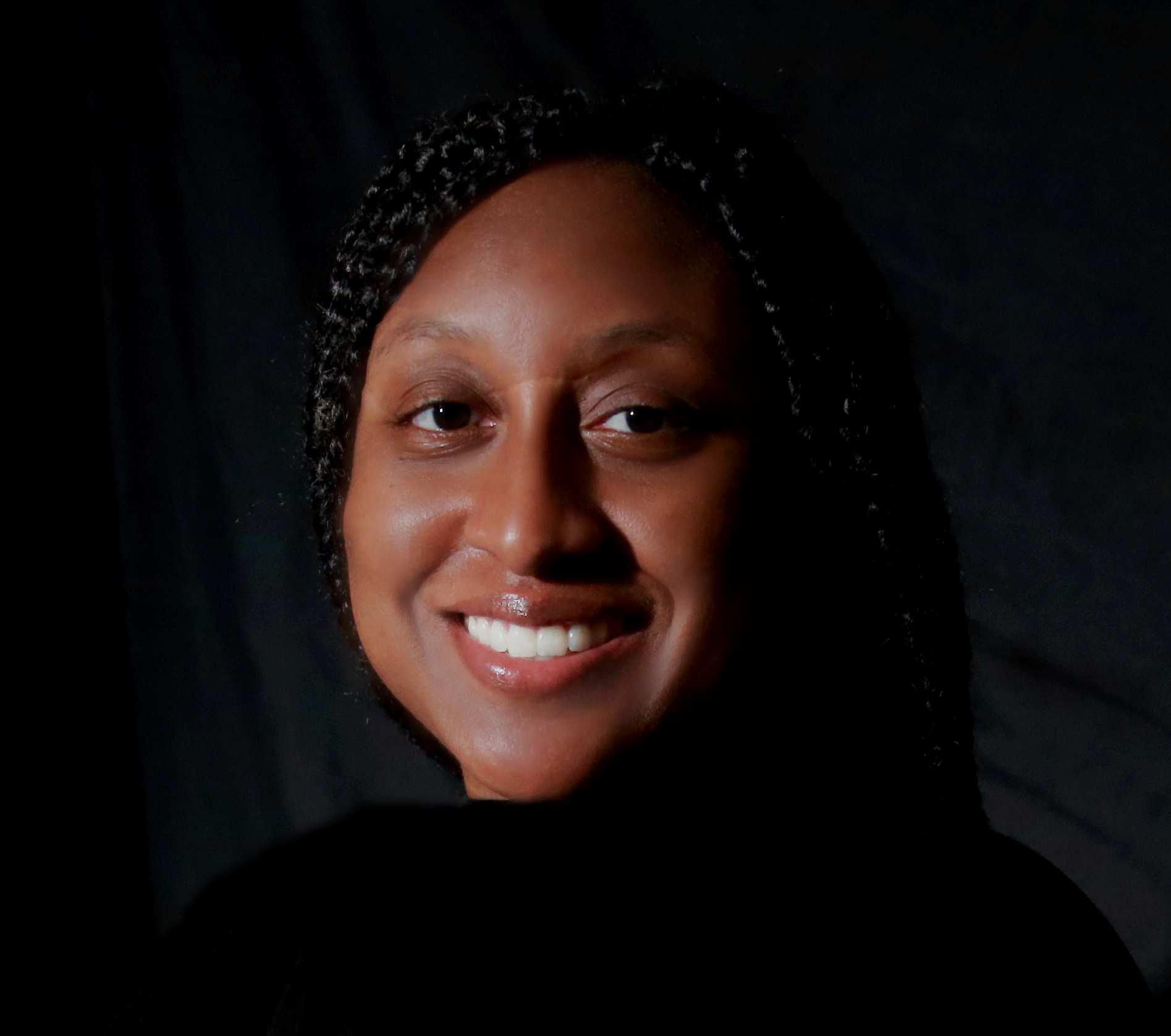
Artist Statement: Brittany is a self-taught photographer/visual artist from Charleston, South Carolina. Her artworks have been featured in multiple exhibitions. As a result, two of her artworks are now on permanent display. She has been a background actress on a TV Show, worked at film festivals, as a runway photographer, etc. She believes there must always be a place between artworks that are deemed “beautiful” or “aesthetically pleasing to the viewer” and artwork that conveys a message. Brittany is forever evolving and is appreciative for every opportunity bestowed upon her.
View Q&A with Brittany Alston
Q: How do you believe your work resonates with this call’s theme of exploring a specific place, community, or its influence on your identity?
A: Brittany believes her artwork resonates with the community and the influence of her identity. Her artwork is always inspired by her personal identity of being an African-American and a woman, as well as her own self-identity. Brittany is fully aware that she is an African-American woman living in this world and the majority of her artwork mirrors that as well. For example, her “Black Girl Series” depicts some emotions that African-American women (Or, in general, a black woman) may feel living in this society. The world has placed so many negative connotations amongst them and unfortunately, some people in the world have started to believe them. Furthermore, from her “Connection Series,” Brittany tries to convey some personal identity. The “Connection Series” explains how if people do not connect with themselves, how exactly will they know what they want out of their own lives? With both of these series, Brittany is tackling community and personal identity. Fortunately, people can become better once they are connected with themselves, which can lead to a better community and future.
Q: What are your hopes or goals for the future of your artistic endeavors?
A: Brittany’s hopes and goals regarding her artistic endeavors include creating more substantial artwork, exhibiting her artwork around the world, becoming a full-time artist, and working more within the artistic/creative field. Brittany knows there is so much more to learn regarding her craft, and she is willing to learn!
Cassandra Chalfant is an artist living and working in Denver, CO. She received her bachelor of fine arts in painting and drawing and a minor in Political Science in 2016 from Tyler School of Art, Temple University in Philadelphia, PA. Cassandra has lived across the United States throughout her life, and her art practice is informed by the varying landscapes she has seen in a regularly changing environment. She explores a wide breadth of topics in her work: the significance of landscape and place; the relation between technology, image, and the self; humanity and nature; collection and obsession with objects and memories; family history and mental health. Her work has been exhibited across the country, including in Colorado, Indiana, Louisiana, New York, Pennsylvania, and Rhode Island. She has also been featured in publications such as Space on Space Magazine issue #3, and New American Paintings issue #162.

Artist Statement:Chalfant’s work delves into the ways we experience our most personal images. How do we hold them, alter them, imagine or escape them? Why do we revisit them over and over again? Largely through paintings referencing photographs, she explores her own memories, the collective memories of her family, and the worlds she has created. With heavy influence from the photographic image, Chalfant’s work points to the role of image as storyteller, collector, historian, and deceiver. Through depicting Polaroids, slides, televisions, and digital images, she illustrates the change in the recent history of the photographic image and its exponential influence on our perceptions. With these images, she references themes found in the works of the Romanticists, such as solitude, introspection, and the relationship between humans and the environment, as well as contemporary conversations around nostalgia, mental health, and place.
View Q&A with Cassandra Chalfant
Q: How do you believe your work resonates with this call’s theme of exploring a specific place, community, or its influence on your identity?
A: Place is everything in my work. It is what we perceive and often influences how we interpret and experience our lives. My first goal within a painting is to transport a person into the place depicted (a landscape, a living room, an abandoned building). It is up to them to then explore. We can learn so much from examining where we are or have been or the places we create in our minds. Place is the vehicle I use. By depicting places in my paintings as photographs, memories, or imagined worlds, I can touch on a wide variety of topics in a nuanced way that leaves room for that important exploration. I want to lead the viewer to a conversation and still give them the agency to answer.
Q: What are your hopes or goals for the future of your artistic endeavors?
A: I hope to continue showing my work to as many people as are interested in seeing it. Through showing, I hope to create and have more conversations about painting with art lovers and skeptics alike. Painting is my most important language and through using it, I learn more about myself and the world every day. My goal is to share that with others who may also find it useful or even crucial.
Meridith McNeal is a Brooklyn-based artist represented by Figureworks Gallery (Saugerties, NY), the Flat Files of Kentler International Drawing Space (Brooklyn, NY), and Embrace Creatives (Detroit, MI). She has been a frequent Visiting Artist at the American Academy in Rome. Her work has received numerous awards, most recently the Curators Award in All The World’s a Stage, Cape Cod Museum of Art, Dennis MA, Association Award Winner, Brand 49, Brand Art Center, Glendale, CA; Silver Medal, Curators Award, PAPERWORKS 2021, b.j. spoke gallery, Huntington, NY; Jurors Top Choice in Arizona Aqueous XXXV at Tubac Center of the Arts, Tubac, AZ; Meridith was honored as a 2020 Artist of the Year by the Circle Foundation for the Arts, Lyon, France. Meridith regularly exhibits her artwork throughout the US and abroad. Meridith is the co-founder and Director of ART YARD BKLYN.
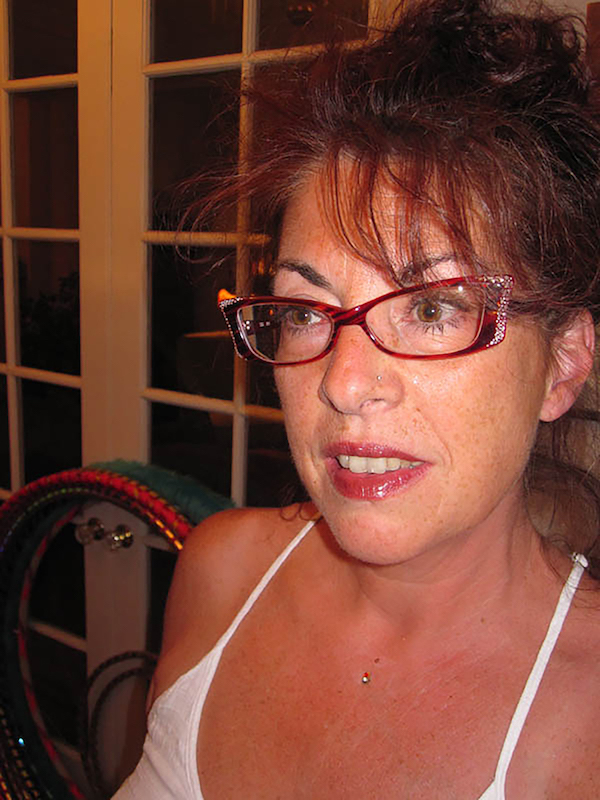
Artist Statement:Three things want a frame to give them structure: a painting, a story, and a window. All take different kinds of framing, of course, but the concept is similar: physical or abstract, a frame implies a viewpoint. It is where you start from.
Where you end up, on the other hand, is another matter entirely because frames — for paintings, for stories, or windows — are not so simple. They are points of entry that, at the same time, throw up barriers and define boundaries: the viewer is on one side or the other. A frame simultaneously organizes, invites, points the way, and separates.
Windows, in particular, invites a multiplicity of meanings. Add a reflective surface so light can work its magic, and you bring a sort of graceful confusion: what is on one side can coexist with what is on the other, the space behind and before the viewer overlaid. Where you have been shows itself side by side with where you are or where you may yet be going.
Inside Outside Windowphilia are life-sized watercolor paintings of windows on paper. The pieces play with reflection and layers of external and internal space, exploring the precarious and terrifying idea of being on one side or the other of incarceration.
View Q&A with Meridith McNeal
Q: How do you believe your work resonates with this call’s theme of exploring a specific place, community, or its influence on your identity?
A: Inside Outside Windowphilia are life-sized ink and watercolor paintings of windows on paper. They depict a chaotic urban built environment (buildings, sidewalks, streets), often including the natural world (foliage, sky, sea), as both a record of place and as a sort of emotional litmus test. The pieces play with reflection and layers of external and internal space, each piece is titled to reflect the series, the image, and the specific location depicted.
This clearly places each piece somewhere in the world from Coney Island to the Gianicolo, the Lower East Side of Manhattan to the Italian fishing village of Sperlonga, Italy; all are important places to me.
Q: What are your hopes or goals for the future of your artistic endeavors?
A: In terms of presentation, I would like to show my work in museums, galleries, and alternative spaces that truly support artists, care about education, and provide access for all.
I look forward to creative and innovative collaborations. I want to dive into concepts that I cannot quite imagine yet. I believe that intellectual inquiry and dreaming are essential to healing and growth.
What I hope to manifest in my new work is a change in the treatment of people, freedom, justice, prison reform, and ultimately, a kinder and more thoughtful world. I like to dream big.
Artwork Featured: Inside Outside Unnameable Books (Vanderbilt Avenue, Brooklyn), watercolor, 2020; Inside Outside Recovery, Ceramics Studio (Clinton Hill Bklyn, watercolor on paper, 2022; Inside Outside Artemisia (Piazza Navona, Rome), watercolor on paper, 2023. Photos courtesy of Meridith McNeal.
Written by Communications & Marketing Manager Justine Chapel


